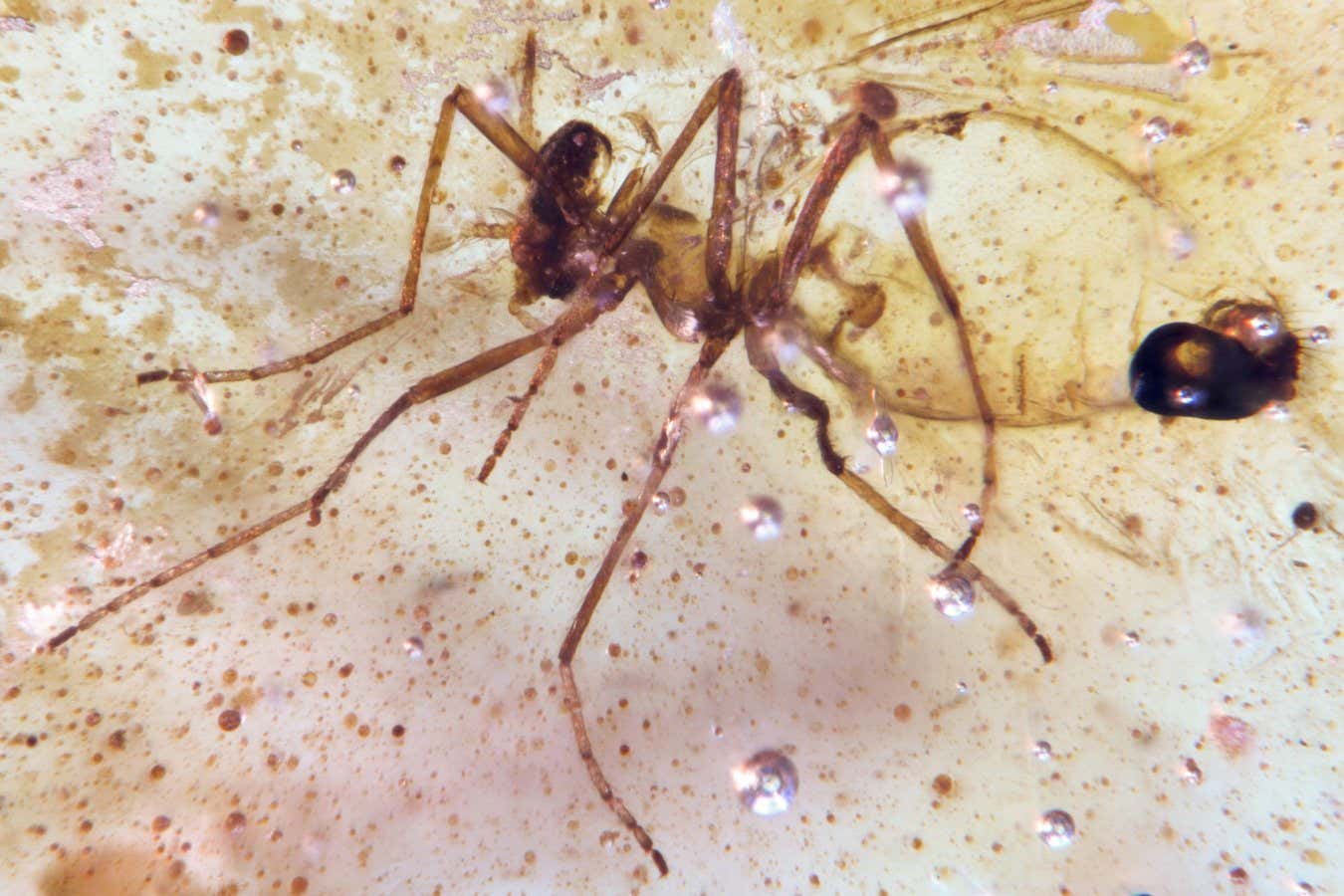
A non-biting midge trapped in amber found in Ecuador
Mónica Solórzano-Kraemer
An array of perfectly preserved insects and even a spider’s web, encased in 112-million-year-old amber, have been found in a quarry in the Amazon rainforest.
Xavier Delclòs at the University of Barcelona, Spain, and his colleagues had heard that amber – fossilised tree resin – had been recovered from the Genoveva quarry, in the Oriente basin of eastern Ecuador, and headed there in 2022 to see for themselves.
The amber at the site is thought to come from the resin of conifers in the Araucaria family, which covered the region when modern-day Ecuador was part of the Gondwana supercontinent.
Amber deposits come from two main sources: the above-ground parts of trees and the roots. Those from above the ground sometimes preserve the remains of insects and other life forms that got stuck in the resin that then turned to amber. These preserved remains are known as bio-inclusions.
Most of the amber found at the quarry was formed from sources below the ground, but during a preliminary dig at the site, the team collected 60 promising chunks of above-ground amber that were brought back to the lab for preparation and study.
More than a third of these contained bio-inclusions such as insects, plant parts and even a spider’s web that date to the Cretaceous Period, which is part of the Mosazoic Era. “This is the first time that [Mesozoic] amber with bio-inclusions of insects and spiders has been found in all of South America and they are certainly new species,” says Delclòs.
The insects included many different kinds of flies as well as wasps, midges, a beetle and mosquitoes, all of which lived alongside dinosaurs in a humid forest close to the equator. Some of the species are dependent on water to complete their life cycles, so lakes, rivers and swamps were probably plentiful.
A polypore fungus beetle trapped in amber found in Ecuador
Enrique Peñalver
If a person was to visit the site at that time, says Delclòs, they would definitely need insect repellent. “And probably also some way of escaping from a carnivorous dinosaur or two,” he says.
“There are several mosquitoes that would be blood-feeding and this would indicate that at some point in their life cycle they would need the blood of vertebrates, possibly avian or non-avian dinosaurs.”
However, any dinosaur DNA that may have once been in the blood consumed by the mosquitoes presevered in the amber would have been destroyed long ago, most likely by chemicals in the resins. “We cannot have a Jurassic Park from Cretaceous amber, at least with current techniques,” says Delclòs.
Dinosaur hunting in the Gobi desert, Mongolia
Embark on an exhilarating and one-of-a-kind expedition to uncover dinosaur remains in the vast wilderness of the Gobi desert, one of the world’s most famous palaeontological hotspots.
Topics:
Source link : https://www.newscientist.com/article/2496954-stunning-amber-deposits-hold-insects-from-the-time-of-the-dinosaurs/?utm_campaign=RSS%7CNSNS&utm_source=NSNS&utm_medium=RSS&utm_content=home
Author :
Publish date : 2025-09-18 16:00:00
Copyright for syndicated content belongs to the linked Source.